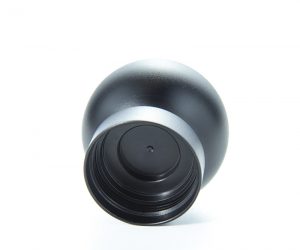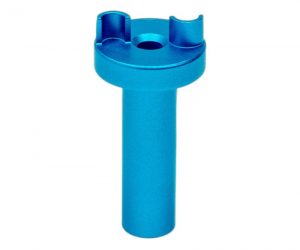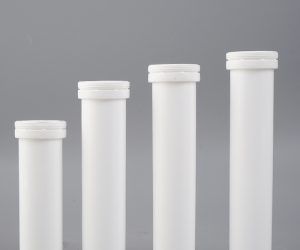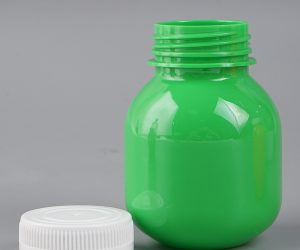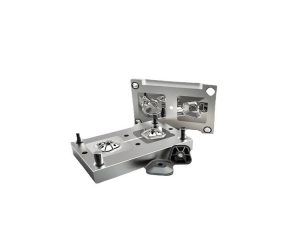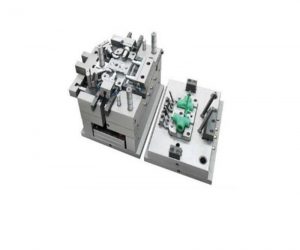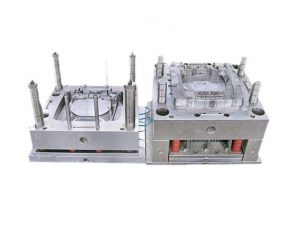The selection of a suitable plastic product supplier is not merely a logistical exercise; it's a strategic imperative impacting operational efficiency, product quality, and ultimately, a company's bottom line. This exploration delves beyond superficial considerations, examining the intricate interplay of factors that determine the viability of a supplier relationship within the volatile landscape of the plastics industry.
1. Navigating the Labyrinth: Beyond the Obvious in Supplier Selection
The reliance on plastic components permeates modern manufacturing and commerce. A flawed supplier choice, however, can trigger a cascade of negative consequences, from compromised product integrity to crippling supply chain disruptions. This analysis transcends a simple checklist, probing the nuanced aspects of supplier evaluation, encompassing not only immediate needs but also the potential for future adaptation and resilience in the face of market fluctuations and technological advancements. We will dissect the critical decision-making process, moving beyond surface-level assessments of quality and reliability to uncover the hidden complexities that truly define a successful partnership.
2. The Supplier's Strategic Role: A Deep Dive into the Supply Chain Ecosystem
Plastic product suppliers are not simply vendors; they are integral nodes within a complex supply chain ecosystem. Their influence extends far beyond the provision of raw materials or finished goods. They represent a critical link, impacting everything from material sourcing and manufacturing processes to logistics, inventory management, and ultimately, the timely delivery of components essential for maintaining production schedules and meeting market demands. Understanding the supplier's internal operations, their commitment to sustainable practices, and their overall strategic alignment with the client's business objectives is paramount. This requires a thorough due diligence process extending beyond superficial audits.
3. Deconstructing the Decision Matrix: A Multifaceted Evaluation Framework
The selection of a plastic product supplier necessitates a rigorous evaluation framework that transcends simplistic cost-benefit analyses. While factors like cost-effectiveness, product range, and customer service remain crucial, a deeper understanding of the supplier's technological capabilities, their commitment to innovation, their risk mitigation strategies, and their ethical sourcing practices is essential. This involves a comprehensive assessment of their quality control mechanisms, their capacity for scaling production to meet fluctuating demands, and their ability to adapt to evolving industry standards and regulatory requirements. Furthermore, the evaluation must consider geopolitical factors, potential supply chain vulnerabilities, and the supplier's long-term financial stability. Only through such a multifaceted approach can businesses ensure the selection of a truly resilient and reliable partner capable of navigating the inherent uncertainties of the global plastics market.
Plastic products are widely used in various industries and applications, such as packaging, construction, automotive, medical, and more. However, not all plastic products are created equal, and choosing the right supplier can make a big difference in the quality, cost, and sustainability of your plastic products. Here are some factors to consider when choosing a plastic product supplier:
- Quality: The quality of the plastic products depends on the materials, processes, and standards used by the supplier. You should look for a supplier that uses high-quality raw materials, advanced manufacturing techniques, and rigorous quality control measures to ensure that the plastic products meet your specifications and expectations. You should also check the supplier's certifications and accreditations, such as ISO 9001, to verify their compliance with international quality standards.
- Cost: The cost of the plastic products is influenced by several factors, such as the quantity, size, shape, design, and complexity of the products. You should compare the prices of different suppliers and look for a supplier that offers competitive and transparent pricing. You should also consider the hidden costs, such as shipping, handling, storage, and taxes, that may affect the total cost of ownership of the plastic products.
- Sustainability: The sustainability of the plastic products refers to the environmental impact of the production, use, and disposal of the products. You should look for a supplier that uses eco-friendly materials, such as recycled or biodegradable plastics, and adopts green practices, such as reducing waste, energy consumption, and emissions. You should also check the supplier's environmental certifications and awards, such as ISO 14001, to verify their commitment to environmental responsibility.
- Service: The service of the plastic product supplier refers to the customer support, communication, and delivery of the products. You should look for a supplier that provides excellent customer service, such as answering your queries promptly, providing technical assistance, and offering after-sales support. You should also look for a supplier that communicates clearly and effectively with you throughout the order process, from design to delivery. You should also look for a supplier that delivers the products on time, in good condition, and according to your specifications.
Rigorous Quality Assurance and Supply Chain Resilience:
The selection of a plastic product supplier necessitates a meticulous evaluation extending beyond superficial certifications. Demand demonstrable adherence to rigorous quality control protocols, exceeding mere ISO compliance. Scrutinize their track record for consistent, defect-free production, demanding evidence of proactive defect mitigation strategies rather than reactive remediation. Reliability transcends punctual delivery; assess their capacity to navigate unforeseen supply chain disruptions, geopolitical instability, and material price volatility with demonstrable agility and transparency. A robust risk assessment framework should be a cornerstone of their operational philosophy.
Specialized Expertise and Adaptive Product Portfolio:
A truly valuable supplier transcends mere product breadth; seek demonstrable depth of industry-specific expertise. Their comprehension of diverse plastic chemistries, advanced manufacturing techniques (e.g., injection molding, extrusion, rotational molding), and the intricate landscape of regulatory compliance (e.g., REACH, RoHS) must be rigorously vetted. A flexible and adaptable product portfolio is crucial; the ability to tailor solutions to highly specific applications, coupled with a proactive approach to collaborative product development, signifies a partner capable of navigating evolving market demands.
Navigating the Oligopolistic Landscape of Plastic Manufacturing:
The global plastic industry is characterized by an oligopolistic structure dominated by a handful of multinational giants. While entities like Dow, LyondellBasell, ExxonMobil, SABIC, and BASF represent established players with substantial R&D capabilities and global reach, a sophisticated evaluation requires a nuanced understanding of their respective strengths and weaknesses within specific polymer segments. Consider factors such as vertical integration, geographic footprint, and commitment to circular economy initiatives. Furthermore, explore the potential benefits and risks associated with engaging with both Tier-1 manufacturers and specialized niche suppliers.
Decoding Dynamic Market Signals and Emerging Trends:
Market demand for plastic products is far from static; it's a dynamic interplay of macroeconomic forces, evolving consumer preferences, and increasingly stringent environmental regulations. The current emphasis on sustainable alternatives—bioplastics, recycled content, and compostable materials—represents a paradigm shift. However, a comprehensive market analysis must extend beyond these trends to encompass the specific applications driving demand within your target sector. For example, the automotive industry's shift toward lightweighting presents unique opportunities, while the packaging sector faces escalating pressure for reduced environmental impact. A thorough understanding of these nuanced market signals is paramount.
Strategic Supplier Selection: A Foundation for Sustainable Growth:
The selection of a plastic product supplier is not merely a transactional decision; it's a strategic imperative. The criteria outlined above—rigorous quality assurance, specialized expertise, understanding the oligopolistic landscape, and decoding market dynamics—are interwoven elements of a comprehensive evaluation process. A successful partnership transcends mere product provision; it fosters innovation, ensures supply chain resilience, and ultimately contributes to the sustainable growth of your enterprise. Proactive due diligence, coupled with a long-term strategic vision, is the key to securing a competitive advantage in this dynamic and evolving industry.
Frequently Asked Questions
Who is the biggest supplier for plastic?
The global petrochemical landscape, a complex web of interconnected entities, defies simple answers to questions of "biggest supplier" or "main manufacturer" in the plastic industry. The hegemony shifts subtly, depending on the specific polymer, geographic region, and fluctuating market dynamics. While Dow, LyondellBasell, ExxonMobil Chemical, SABIC, and BASF consistently rank among the industry titans, their positions are not static. These oligopolies control significant portions of the value chain, from monomer production to downstream processing and specialized formulations, but their influence is interwoven with a vast network of smaller players, regional specialists, and increasingly, recyclers.
Who is the main manufacturer of plastic?
The question of plastic's origin is equally nuanced. The simplistic narrative of "petroleum, natural gas, coal, and plants" obscures the intricate chemical engineering involved. The feedstock – often natural gas liquids (NGLs) like ethane and propane, rather than crude oil itself – undergoes complex cracking and polymerization processes to yield the diverse array of polymers that comprise the plastic universe. The choice of feedstock, the specific polymerization catalysts, and the introduction of additives profoundly impact the final product's properties, leading to a bewildering array of grades and specifications. Furthermore, the burgeoning field of bioplastics introduces a new layer of complexity, drawing on renewable resources and challenging the established petrochemical hegemony.
Where do manufacturers get plastic?
Manufacturers access this multifaceted supply chain through a variety of channels, reflecting the fragmented nature of the industry. Direct sourcing from primary producers is common for large-scale operations, but many rely on a complex network of distributors and intermediaries, especially for specialized or niche polymers. Vertical integration, where manufacturers control their own feedstock production or recycling facilities, is becoming increasingly prevalent as companies seek to enhance supply chain resilience and reduce their environmental footprint. The very definition of "manufacturer" is blurred, encompassing everything from the colossal petrochemical giants to smaller, specialized firms focusing on compounding, extrusion, or molding. The industry's structure is dynamic, shaped by mergers, acquisitions, technological advancements, and the ever-evolving global political and economic landscape. Any attempt at a definitive answer to the initial questions risks oversimplification and a fundamental misunderstanding of this intricate and multifaceted industry.
Which plastic products are in demand?
Plastic products that are currently in high demand include eco-friendly and sustainable alternatives, biodegradable materials, and recycled plastics. Packaging materials, consumer goods, medical devices, automotive components, and construction materials continue to be popular sectors for plastic products.
Plastic products are widely used in various industries and sectors, such as packaging, construction, automotive, medical, and electronics. According to a report by Grand View Research, the global plastic market size was valued at USD 579.7 billion in 2020 and is expected to grow at a compound annual growth rate (CAGR) of 3.4% from 2021 to 2028. Some of the plastic products that are in high demand include:
- Polyethylene terephthalate (PET) bottles and containers: PET is a durable, lightweight, and recyclable material that is used for making beverage bottles, food jars, cosmetic containers, and other packaging products. PET bottles and containers accounted for 30.8% of the global plastic packaging market share in 2020.
- Polyvinyl chloride (PVC) pipes and fittings: PVC is a versatile, cost-effective, and easy-to-install material that is used for making pipes and fittings for water supply, drainage, irrigation, sewage, and industrial applications. PVC pipes and fittings are expected to witness a CAGR of 4.9% from 2021 to 2028.
- Polypropylene (PP) films and sheets: PP is a flexible, transparent, and heat-resistant material that is used for making films and sheets for food packaging, medical packaging, agricultural films, labels, and tapes. PP films and sheets are projected to register a CAGR of 5.7% from 2021 to 2028.
- Polycarbonate (PC) lenses and screens: PC is a strong, clear, and impact-resistant material that is used for making lenses and screens for eyewear, cameras, smartphones, tablets, laptops, TVs, and monitors. PC lenses and screens are anticipated to exhibit a CAGR of 4.6% from 2021 to 2028.
we have explored the world of plastic product suppliers, highlighting the factors to consider when selecting a supplier and assessing the importance of quality, reliability, expertise, and product range. We have also provided insights into leading manufacturers in the plastic industry and the current market demand for plastic products. By making informed decisions and choosing the right supplier, businesses can ensure a consistent supply of high-quality plastic products that meet their specific needs.


